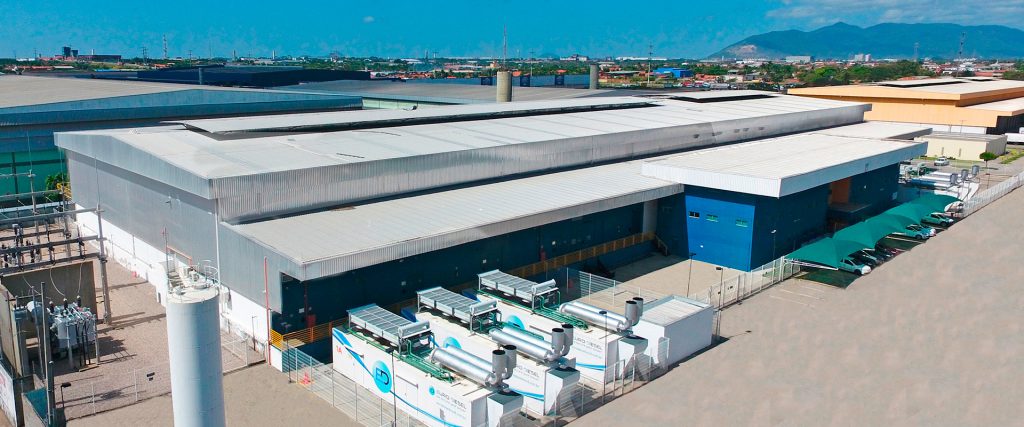Ceará has emerged as the stage for an unprecedented energy transformation in Brazil. The northeastern state simultaneously concentrates two of the most promising sectors of the global economy—state-of-the-art data centers and green hydrogen production—creating direct competition for renewable energy resources and transmission capacity. This competition reveals not only the challenges of the energy transition but also strategic opportunities that can position Brazil as a leading player in the global clean energy and technology market.
The epicenter of energy competition
The magnitude of the dispute is evident in the numbers. Currently, 40 requests for grid access for data centers are underway in Brazil, totaling 16 GW of demand. Of this total, 2 GW is concentrated specifically in the Northeast. Simultaneously, Ceará has signed more than 40 memoranda of understanding for green hydrogen projects, representing investments exceeding US$30 billion by 2031.
The most emblematic project of this new digital economy is the Casa dos Ventos data center in Caucaia, which will house TikTok servers. With an initial capacity of 300 MW and a R$12 billion investment in physical construction, the project will also receive R$38 billion from customers for equipment acquisition. This single project will increase national data processing capacity by 30%—a significant leap forward for Brazil's digital infrastructure.
The energy consumption is impressive: the data center will use energy equivalent to that of 2.2 million Brazilians, employing air-conditioning cooling systems that, despite using only 30m³ of water daily, skyrocket electricity consumption. This demand highlights the challenge the sector poses to the national power grid.

Green hydrogen: Ceará's strategic bet
Parallel to the digital revolution, Ceará is consolidating its position as a national leader in green hydrogen. The Brasil Fortescue project, the largest large-scale initiative of its kind in the country, foresees an investment of R$17.5 billion and a production capacity of 1.2 GW, with potential expansion to 2.1 GW. The Norwegian company Fuella AS is committing R$9 billion to a plant with an annual capacity of 400,000 tons of green ammonia, while the French company EDF has signed a pre-contract for production at the Pecém Complex.
Economic impact studies project substantial transformations: investments in green hydrogen are expected to generate a cumulative 24.2% increase in Ceará's GDP during the construction period (2025-2032) and an additional 8.2% after operation. With these increases, the state could achieve the second-largest GDP in the North and Northeast regions. The Fortescue project alone is expected to create more than 9,000 direct and indirect jobs.
The transmission bottleneck: Central challenge
The main point of tension is the limited capacity of the transmission infrastructure. The National Electric System Operator (ONS) has already rejected several large projects due to the risk of systemic overload. The situation is particularly critical in the Pecém Complex, where both sectors are seeking to establish operations.
The numbers reveal the scale of the challenge: the 9,311 km of transmission lines serving the entire national system are insufficient to meet growing demand. Experts estimate the need for at least 15,000 km of new lines and 16 new substations by 2032, requiring a minimum investment of R$50 billion. In 2024, losses due to curtailment—energy produced but not transported—exceeded R$2 billion.
The Energy Research Company (EPE) is conducting studies to include data centers in the Ten-Year Energy Expansion Plan, recognizing that "competition is real. Load is load anywhere in the system." This official statement highlights the complexity of national energy planning in the face of competing demands.
Strategic competitive advantages
Despite the challenges, Ceará boasts unique attributes that justify global interest. Fortaleza is the second-largest submarine cable focal point in the world, behind only Japan, with 16 cables connecting the state to international markets. Geographic proximity allows for seven-day navigation to the United States and nine days to Europe.
Natural resources complement the logistical advantages: the state boasts the world's best wind power, with constant winds and 13 hours of daily sunshine. More than 80% of the state's energy comes from renewable sources, creating a unique energy matrix. The Port of Pecém maintains a strategic partnership with the Port of Rotterdam, Europe's leading hydrogen hub, establishing a green corridor from end to end.
Integrated solutions: From competition to complementarity
International experiences suggest ways to transform competition into synergy. In the United States, ECL opened the first hydrogen-powered modular data center in Mountain View, California. In the Netherlands, NorthC uses green hydrogen for data center backup. Hydrogen offers large-scale energy storage, on- and off-grid operation for greater resilience, and a clean alternative to diesel generators traditionally used as backup.
Temporal complementarity presents opportunities: hydrogen can provide energy when renewables are unavailable, while data centers can consume surplus renewables locally, stabilizing the grid. This integration, combined with battery storage systems (BESS), can optimize the use of energy resources.
Regulatory frameworks and perspectives
The regulatory framework advances on both fronts. Provisional measure Redata 2025 eliminates federal taxes on data center equipment that uses 100% renewable energy. The Hydrogen Legal Framework (Law 14.948/2024) regulates the production of low-emission hydrogen, while the National Hydrogen Program provides subsidies of R$18.3 billion.
Projections indicate that 2026 will be decisive, with the first final investment decisions on seven green hydrogen projects totaling R$63 billion. Simultaneously, new data centers are expected to receive similar investments. By 2060, electric cars, data centers, and hydrogen could consume up to 16% of Brazil's energy, according to industry studies.
Conclusion: Turning challenges into opportunities
Ceará is positioning itself to become a global hub for clean energy and digital infrastructure. Success will depend on the ability to transform current competition into strategic collaboration, overcoming transmission bottlenecks through coordinated investments between the government, the private sector, and regulators. The R$21.7 billion contracted in 2024 for 4,471 km of lines is a crucial step.
The integration of data centers and green hydrogen can maximize the economic, environmental, and social benefits of the energy transition. With adequate planning, robust infrastructure, and clear regulatory frameworks, the state can lead an energy revolution that positions Brazil at the forefront of the sustainable global economy.

